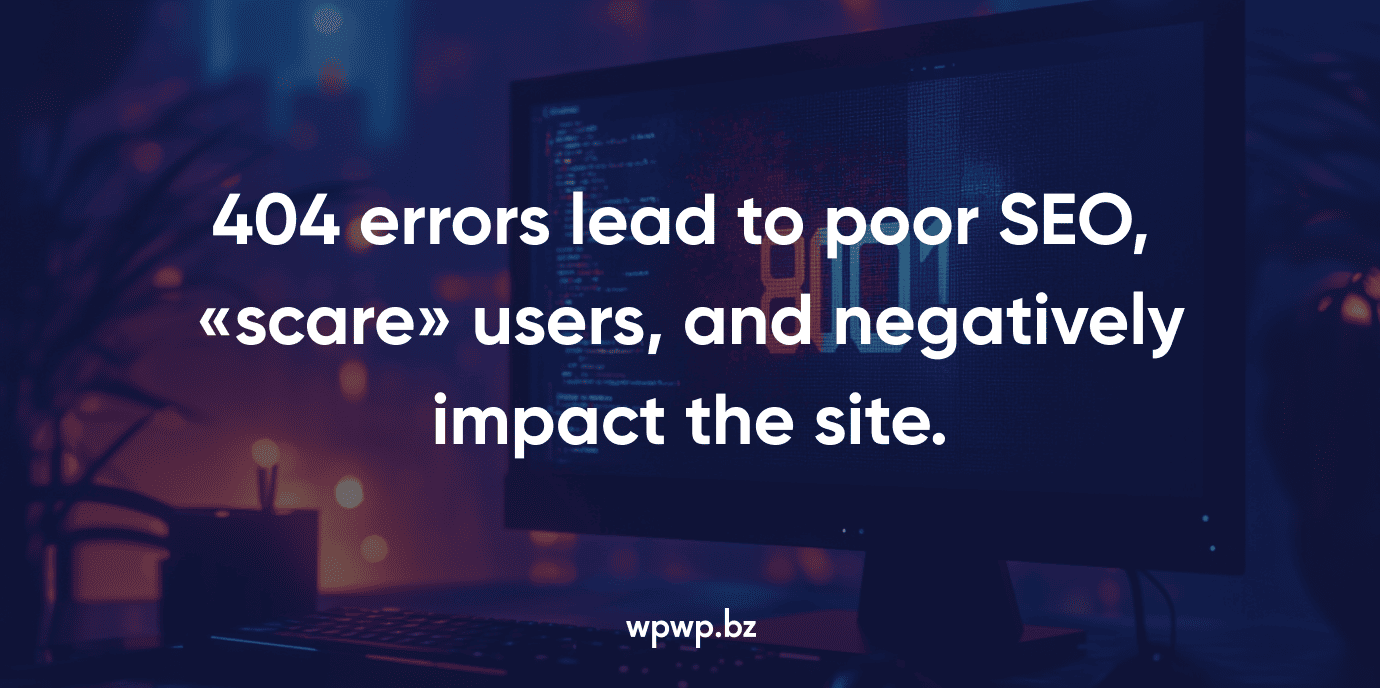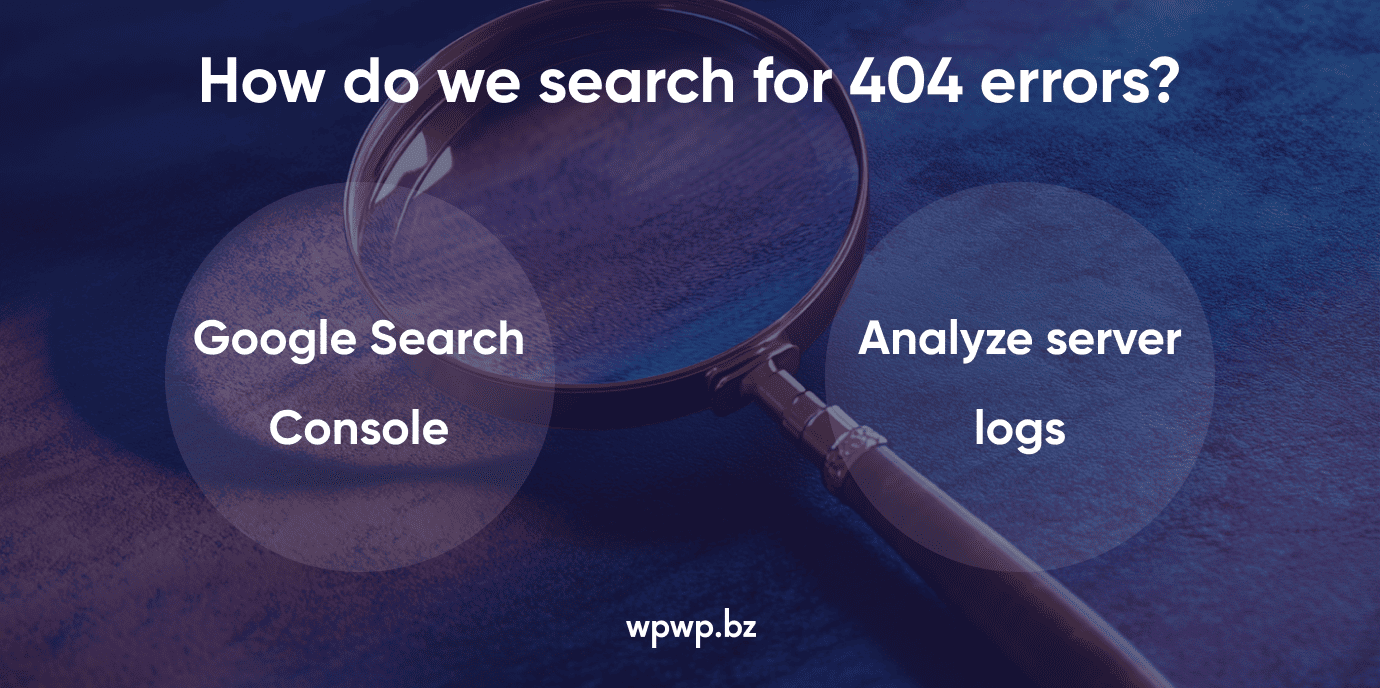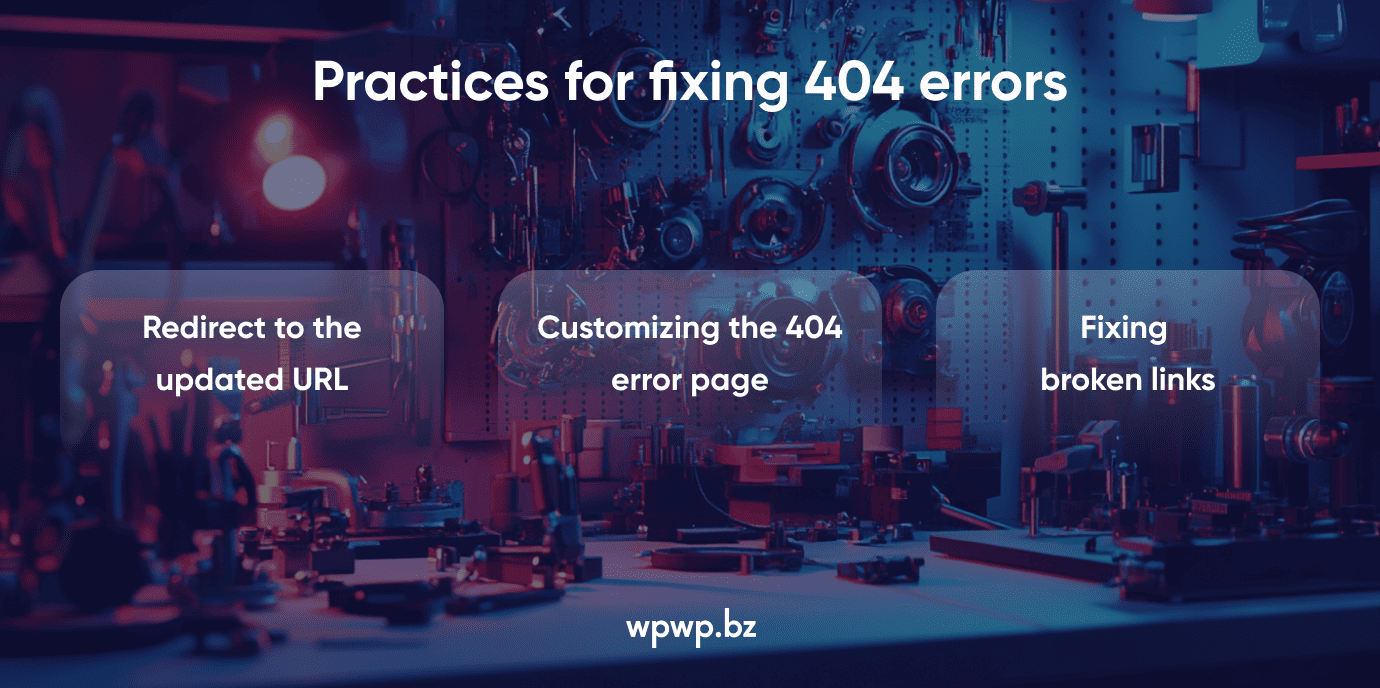
A 404 error on a site can not only degrade the user experience, but also be harmful to the web resource operation. It occurs when a page, post or resource does not exist. It is necessary to properly manage errors to protect the site SEO and ensure a high level of user comfort when visiting pages. In this article, we will look at how our developers solve problems with 404 errors.

What is WordPress 404 Page?
A 404 error indicates that the browser requested a resource (page, image or file) that the server could not find. Although these errors are common, excessive or poorly managed 404 errors can negatively affect user engagement and SEO rankings. The most common causes of 404 errors are:
- deleted pages or posts without proper redirection;
- broken links on website or outdated;
- incorrect permalink settings;
- moved multimedia files or resources;
- errors in URLs.
How to Find 404 Errors – Our Methods and Approaches
Before fixing errors, our developers need to identify where they are occurring. Methods and approaches for identification:
- Check Google Search Console. Google Search Console reports all URLs that are causing a 404 error. We use this tool to determine which pages need fixing and to ensure that search engine crawlers are not encountering broken links.
- Analyze server logs. Server logs contain information about requests made to the website, including failed requests that resulted in a 404 error.
In addition, we use WordPress plugins such as Redirection and 404 to 301 to track and manage 404 errors.

How to Fix 404 Errors on WordPress Sites – About Strategies
After analyzing and identifying errors, our WordPress website developers team moves on to fixing them. Strategies we use:
- Redirects. This is one of the most effective solutions for 404 errors. We use 301 redirects WordPress to redirect users to the updated URL. Redirects are created using special plugins and SEO tools.
- Custom 404 page. Instead of displaying a generic error message, we create a special 404 page to redirect users to relevant content. It can show links to popular or recent posts, a search bar, etc.
- Fixing broken links. When internal or external links are broken, 404 errors occur. We use special scanners to find these links and fix them.

How to Avoid 404 Errors on a WordPress Site?
It is quite possible to fix 404 errors, but it is much better to prevent them from occurring. Methods to avoid 404 errors on a WordPress site:
- redirects after changing URLs;
- redirects after content removal;
- regularly scanning and fixing broken links;
- internal linking optimization.
Conclusion
Effectively handling 404 errors is crucial to maintaining a positive user experience and ensuring your WordPress site performs optimally in search engines. By combining proactive monitoring, SEO optimization WordPress, redirect management, and thoughtful customization, our developers can turn 404 errors from a threat into an opportunity to improve your site.


